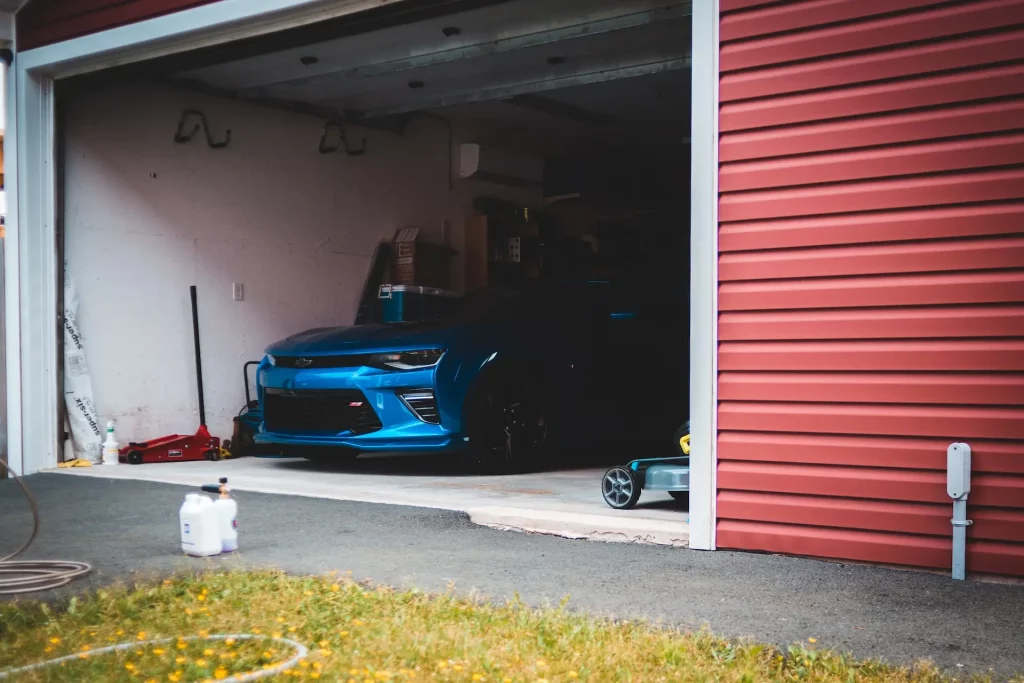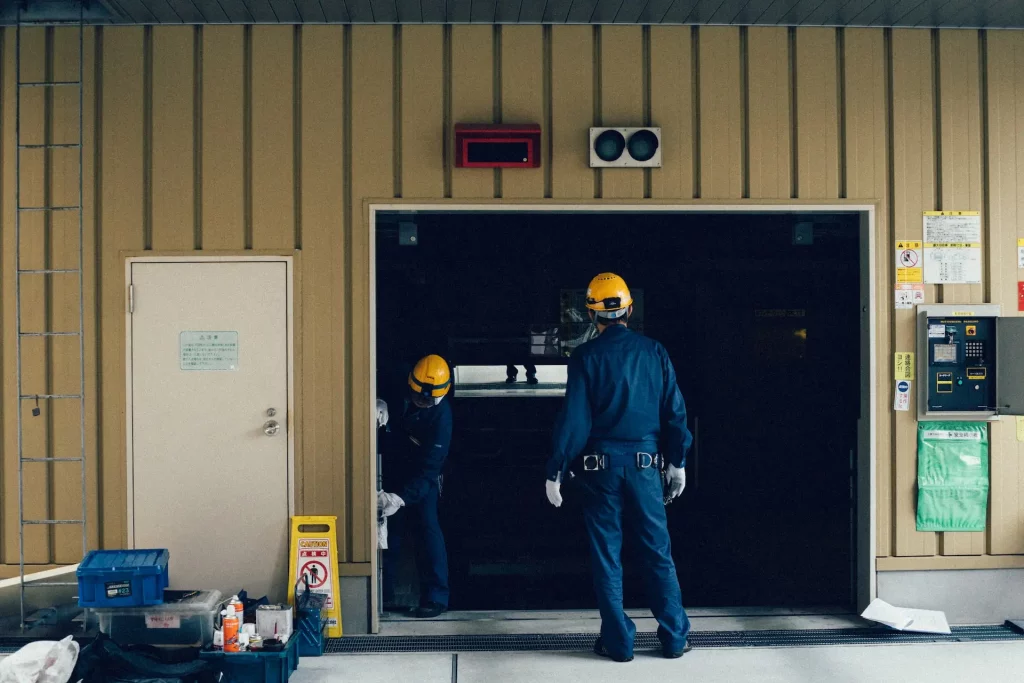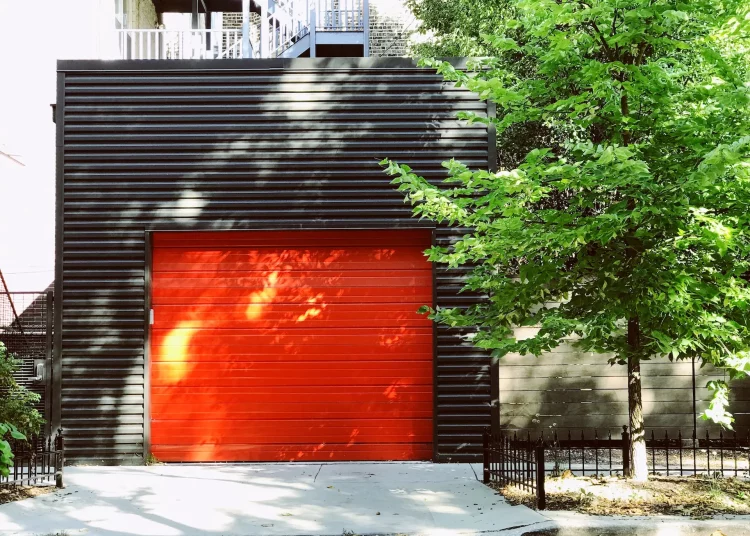Looking to upgrade your home with the convenience of an automatic garage door opener? With so much information on the subject, it can be difficult to navigate and make sense of it all. It’s essential to understand the different types, features, benefits, and maintenance before making a decision.
That’s why we’ve put together this guide to help you understand everything you need to know about automatic garage door openers: their types, features, benefits, and maintenance so that you can make an informed decision for your home.
What is an Automatic Garage Door Opener?
An automatic garage door opener is a motorized electronic device that opens and closes a garage door remotely or through the press of a button. It consists of a power unit, transmission system, and one or more tracks with trolleys to move the door from closed to open.
The power unit usually utilizes electricity or batteries, along with the addition of sensors for safety measures. The transmission system transmits the power from the power unit to the trolley, which engages or disengages it on demand when activating or deactivating the motor.
When activated, the motor will pull in enough tension needed to lift the garage door and then close it as commanded by reversing its direction of energy. In some cases, additional sensors are added to ensure no obstructions while opening and closing.
Types of Automatic Garage Door Openers
| Feature | Chain-Driven | Belt-Driven | Screw-Driven | Direct-Drive |
|---|---|---|---|---|
| Drive System | Chain | Belt | Screw | Motor |
| Lifting Power | High | Medium | Low | Medium |
| Noise Level | Loud | Quiet | Whisper-Quiet | Low |
| Maintenance Requirements | High | Low | Medium | Low |
| Recommended for Garages with Rooms above | No | Yes | Yes | Yes |
| Affordability | Affordable | Moderate | Moderate | Moderate |
| Ideal for | Heavier Doors | Most Residential Doors | Lighter Doors | Most Residential Doors |
If you’re looking to invest in an automatic garage door opener, you’ll need to know the different types of openers available. Automatic garage door openers come in five main categories: chain-driven, belt-driven, screw-driven, and direct-drive. Let us break down each type and why it is important for your selection.
Chain-Driven
This type of opener uses a loud chain drive system that offers reliable performance at an affordable cost. Chain-driven models are often used on heavier doors because they have greater lifting power than belt-driven or screw-driven models. They are not recommended for garages that have rooms above them as the noise may become bothersome.
Belt-Driven
Belt-driven openers use a rubber belt instead of a chain, eliminating much of the noise associated with other systems and making them ideal for garages near living areas. Although they provide less lifting power than chain-driven models, they are still strong enough to lift most residential doors and generally offer quieter operation than other types of openers.
Screw-Driven
Screw-driven systems use a threaded steel rod instead of chains or belts, resulting in very smooth and quiet operation. This opener is ideal for garages with rooms directly above them due to its whisper-quiet performance. The downside is that it requires more maintenance than other types and has limited lifting power, so it’s best suited for lighter doors.
Direct-Drive
Direct-drive openers are becoming increasingly popular due to their low noise level and maintenance requirements. This type of opener uses electric motors rather than chains or belts, resulting in smoother operation and lower noise levels than other openers. In addition, these systems require less maintenance since they don’t have any moving parts outside the motor itself.
You might be interested in: How To Paint Like A Pro
Features of an Automatic Garage Door Opener
Having a garage door that opens and closes automatically is a great way to make your life more convenient. But there’s more to it than just the convenience factor—automatic garage door openers also offer a range of features that can help you stay safe and secure. Let’s take a look at some of these features in detail.
Remote Control
One of the key features of an automatic garage door opener is the ability to open and close your garage remotely, using a universal remote or even your smartphone. This feature makes it easy to come and go without getting out of your car. It also allows you to open the door from anywhere, which makes it easier for family members who are running late or visitors who need access.
Automatic Reversing
This feature is designed to help prevent injury and property damage by reversing the direction of the door if something gets in its way while it's closing. This ensures that you won't accidentally trap anyone (or anything) underneath the door when it closes, making it safer for everyone who uses your garage.
Automatic Lock
Most automatic garage door openers have an automatic locking system that locks the door when closed, providing additional safety and security. This lock prevents unauthorized people from opening your garage without permission, helping ensure that unwanted visitors don't get access to your home or belongings stored in the garage.
Automatic Closing
Some models of automatic garage doors allow you to set a timer to close automatically after a certain amount of time has passed since they were opened. This can be especially useful if you have young children or pets who might otherwise be able to wander outside without anyone noticing.
Timer Function
The timer function on an automatic garage door opener can be used for many different purposes, such as controlling when lights turn on or off inside the house, ensuring that all exterior doors are locked at a certain time each night, or setting up alarms for various events like school start times and bedtimes. It can also be used as an overall home security system if needed.
Smart Home Integration
Some higher-end models offer integration with smart home systems such as Amazon Alexa or Google Home. This allows you to control your garage door remotely using voice commands or other smart home features like automated scheduling, so you never have to worry about forgetting to close it again!
Benefits of Automatic Garage Door Opener

An automatic garage door opener is a must-have for any modern home. It not only adds convenience and comfort but also increases security and energy efficiency. In addition to the obvious benefits, here are some other reasons why you should consider installing an automatic garage door opener.
Convenience
One of the benefits of an automatic garage door opener is the convenience it provides. You no longer have to manually open or close your garage door when you come and go; just push a button on the remote control, and you're in or out in the blink of an eye. Some openers even come with smartphone app control so that you can open or close your garage door from anywhere in the world.
Safety & Security
An automatic garage door opener also improves safety and security by eliminating the need to manually open or close the door yourself. This means that children, pets, and anyone else who could get injured by a heavy manual door will be much safer with an automated system in place. Additionally, many automated systems come with additional features, such as motion sensors that automatically close the door if anything enters its path while opening or closing. This can help prevent intruders from entering your home through your garage.
Energy Efficiency
Automatic garage doors are also much more energy efficient than traditional manual doors because they are designed to seal tightly when closed and open quickly when activated by a remote control or keypad entry system. This prevents air from escaping from your home and helps keep heating costs low during winter and cooling costs low during summer.
Maintenance
Automatic garage doors require very little maintenance compared to manual doors since they operate without springs or hinges that require regular lubrication or adjustments over time. You must occasionally check the moving parts for wear and tear and ensure everything is functioning properly before using them again. The only other thing that may need servicing is the battery on your remote control unit, which can easily be replaced without any special tools or knowledge required.
Cost
Automated systems are generally more expensive than traditional manual systems, but they tend to last longer due to their lack of moving parts which require regular maintenance over time) making them more cost-effective in the long run. Additionally, some insurance companies offer discounts for homeowners who have installed automated systems in their homes which can further reduce overall costs associated with installation and operation over time.
You might be interested in: Build a House in One Week – The Impossible Dream
Choosing the Right Automatic Garage Door Opener
Installing an automatic garage door opener can be a great way to increase the value of your home and make your life easier. But it’s important to take the time to consider all the factors that go into choosing the right automatic garage door opener for your needs. Let’s look at some of these factors, including the size and weight of the door, type of garage door, noise level, power source, and additional features.
-
Size and Weight of the Door
-
Type of Garage Door
-
Noise Level
-
Power Source
-
Additional Feature
When choosing an automatic garage door opener, it's important to consider the size and weight of your door. Many openers are designed to lift standard single-car doors that weigh up to 500 pounds. If your door is heavier or wider than this, then you will need a more powerful opener with a higher lifting capacity. Additionally, if your door is made from wood or steel, you will need an opener specifically designed for that material type.
One of the most important decisions when choosing a garage door is knowing which type best suits your needs. There are six primary types: sectional, roll-up, side-hinged, slide-to-the-side, tilt-up canopy, and tilt-up retractable. Each has its unique features to consider. In addition to the style of your new door, you'll want to select a material and finish that are attractive while providing reliable performance. Coloring the door can be another great way to add visual appeal, with bold colors making a statement or subtle colors seamlessly melding into your home's exterior. Plus, even more customizations, like windows, insulation, and hardware, further enhance its function and aesthetic.
The noise level is another important factor when choosing an electric garage door opener. If your garage is attached to your house or has bedrooms above it, you may want to opt for a quieter model with sound-dampening technology to avoid disturbing anyone who may be sleeping nearby. On the other hand, if noise isn't an issue, you can opt for any model available on the market today, as they all generate very similar noise levels when operating correctly.
Some automatic garage door openers run off regular household current, while others use batteries or solar power as their primary energy source. Some models also feature dual power sources, which allow them to switch between electricity and battery power depending on availability to ensure constant operation, even during power outages or storms. When selecting a power source for your new opener, ensure it matches up with whatever energy source you have available in your home for maximum efficiency and reliability over time.
There are many additional features available with modern automatic garage door openers, such as remote control functionality, motion sensors, keypads, etc., which can add convenience and security benefits if they are something you think would be useful in your particular circumstances. Consider what extra features could benefit you before making a purchase decision so that you get the maximum benefit from your new system.
Installation and Maintenance of Automatic Garage Door Openers

When installing an automatic garage door opener, hiring a professional is always best. A professional can ensure the opener is correctly installed to guarantee safety and reliability. An experienced technician will also be familiar with local building codes and other regulations that may affect installation in your area.
In addition, they are trained to work with all types of doors, openers, remotes, keypads, and other components needed for a successful installation. Like any machine, regular maintenance is necessary to keep your garage door opener running smoothly. Below are a few tips on how to keep your automatic garage door opener in top shape:
| Check | Description |
|---|---|
| Clean the tracks | Regularly cleaning the tracks of your garage door can prevent the accumulation of dirt, dust, and other debris that may hinder the smooth functioning of your garage door opener. By ensuring that the tracks are free from obstruction, you can help maintain your garage door's normal movement. |
| Lubricate moving parts | All mechanical systems require proper lubrication to perform efficiently. It is important to lubricate all moving parts, such as springs, wheels, and wires, regularly using specialized lubricants designed for use with garage doors. |
| Check for alignment issues | Incorrectly aligned tracks can cause your garage door system to malfunction. Inspect the alignment of your tracks and make necessary adjustments if needed. |
| Check sensors | Automatic garage door openers rely heavily on sensors for safety purposes. Make sure you inspect your sensors regularly to ensure they are not blocked or damaged in any way, which could lead to accidents or injury. |
| Test control systems | Test the control systems of your automatic garage door opener, such as the remote and wall-mounted controls, by pressing every button a few times each month. This will help identify any potential functional issues before they become major problems. |
Common Issues and Troubleshooting
Automatic garage door openers can experience a range of issues over time. Troubleshooting these issues is important to prevent further damage and ensure the system’s proper functioning. Below are some common issues that you might encounter with your automatic garage door opener, as well as tips on how to troubleshoot them:
Malfunctioning Remote
Check your remote control's battery and replace it if needed. Ensure the device is not too far from your garage door when pressing the buttons. Additionally, reset the transmitter and receiver codes to ensure they are in sync.
Unresponsive Wall-mounted Control
Make sure that all wires connected to the main control panel and wall-mounted control are securely connected. If necessary, clean any corrosion from the terminals of these wires using a wire brush.
Garage Door is Stuck
This is usually caused by an obstruction in the tracks or misalignment of tracks. Inspect your tracks, ensure nothing is blocking them, and adjust if misalignments occur. Additionally, lubricate all moving parts on your garage door opener system to ensure smooth operation.
Noisy Operation
This can be caused due to lack of lubrication or broken components inside your garage door opener mechanism. Lubricate all moving parts and inspect for any broken components, such as springs or wheels, that need to be replaced immediately.
Slow Movement
This could either be caused by a malfunctioning motor or lack of lubrication which causes friction between components. Check the power source for your opener system and its wiring connection, then lubricate all moving parts for smoother functioning.
Conclusion
Automatic garage door openers offer a range of benefits that make them a popular choice for many homeowners. They provide convenience, security, and ease of use, making it easy to control your garage door from a distance. Many different types and features are available, so it is important to carefully consider your needs and preferences when choosing an automatic garage door opener. Proper installation ensures your garage door opener operates smoothly and safely. Hence, it is important to follow the manufacturer’s instructions and seek the assistance of a professional if necessary.




















